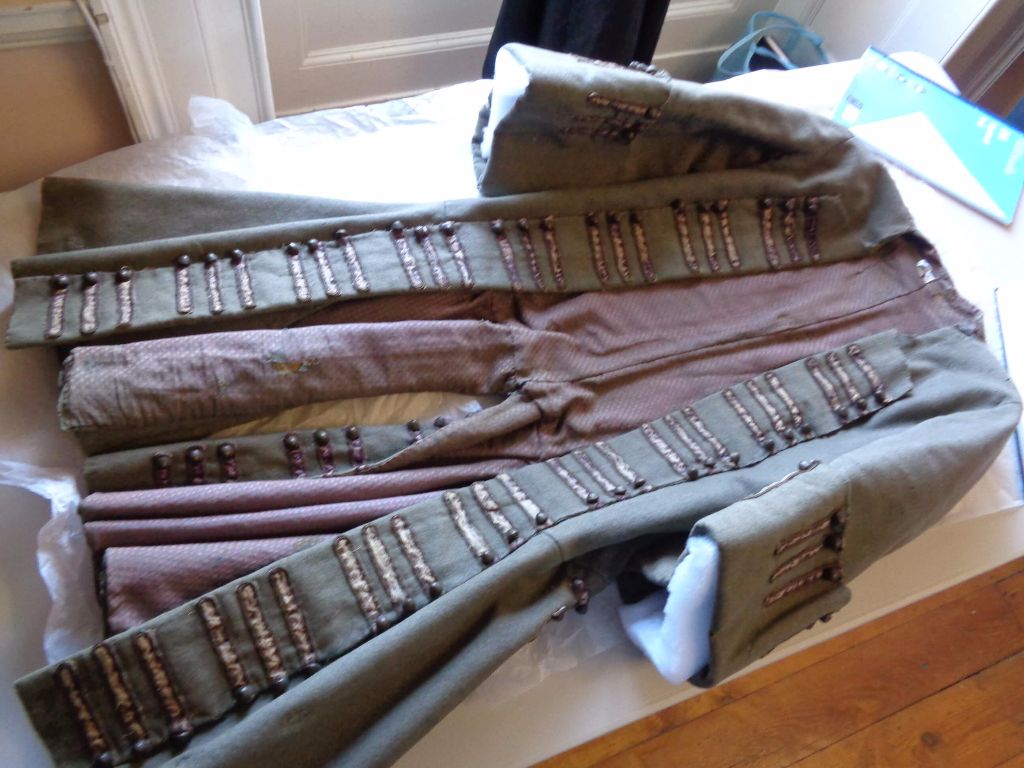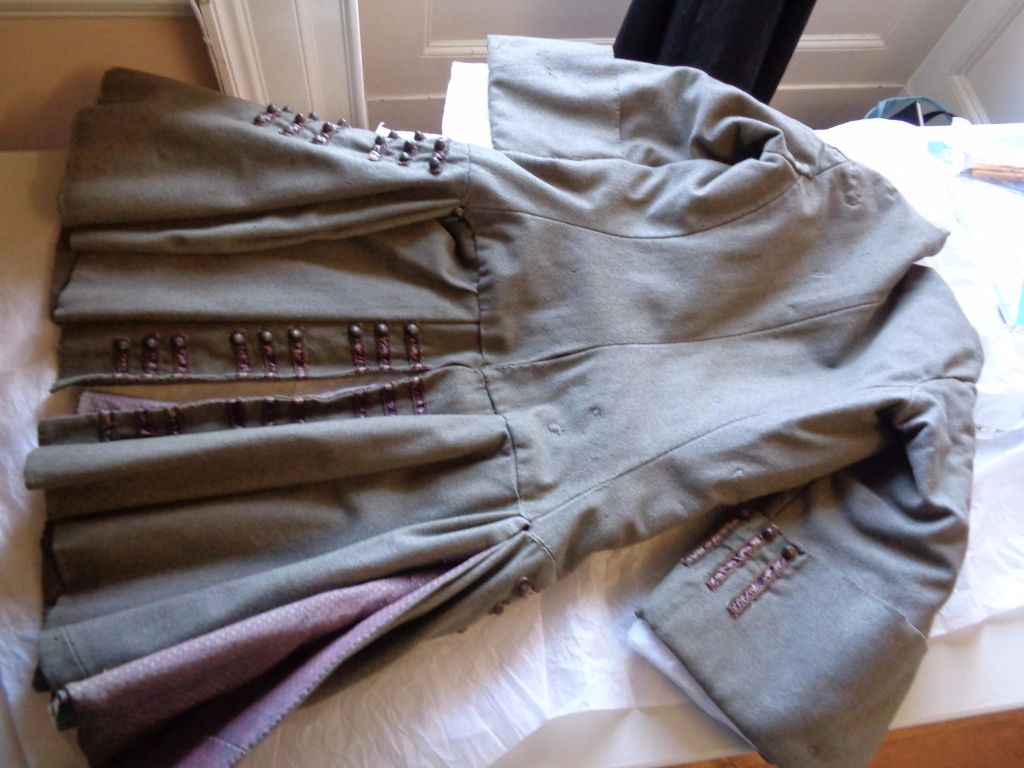Study Notes:
Berrington Hall – SNO.87 – 1720-29 Coat
First Off: All of the following images are courtesy of Berrington Hall and the National Trust – Thank you
Did you know, there are over 120 buttons on this coat! And that it has been shortened – imagine, with the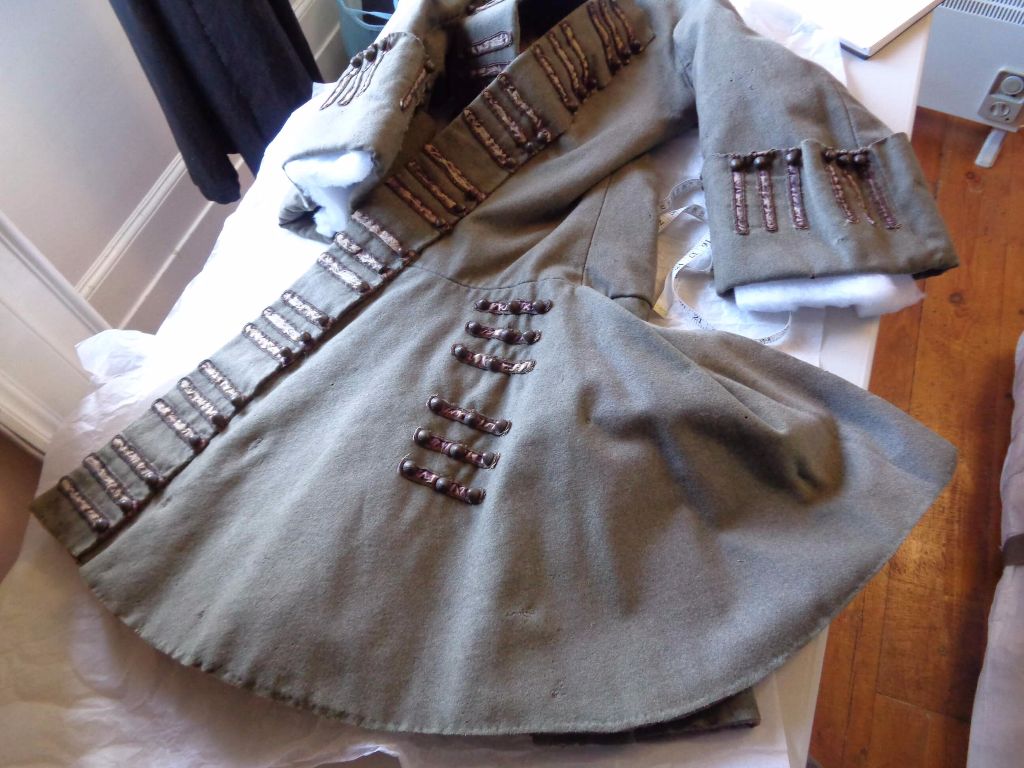 extra length of skirt and the pocket flaps that there were probably nigh on 140 when the coat was in it’s original condition. That’s a heck of a lot of buttons – and a heck of a lot of expense!
extra length of skirt and the pocket flaps that there were probably nigh on 140 when the coat was in it’s original condition. That’s a heck of a lot of buttons – and a heck of a lot of expense!
The wool for this is, in our understanding, a heavy stuff – solid to feel and quite dense. It must’ve been quite heavy to wear too – and it’s bulky nature adds to the solidity and fullness of the design of the coat. The Cunnington’s state (in their book ‘A Handbook of English Costume in the 18th Century) that the earlier high fashions were set apart from Undress by their stiff and heavy fabrics. There is no back story to this coat and we’ve no idea if this would be classed as a ‘Dress’ or not, but the amount of buttons and metal braiding would suggest it was an expensive item.
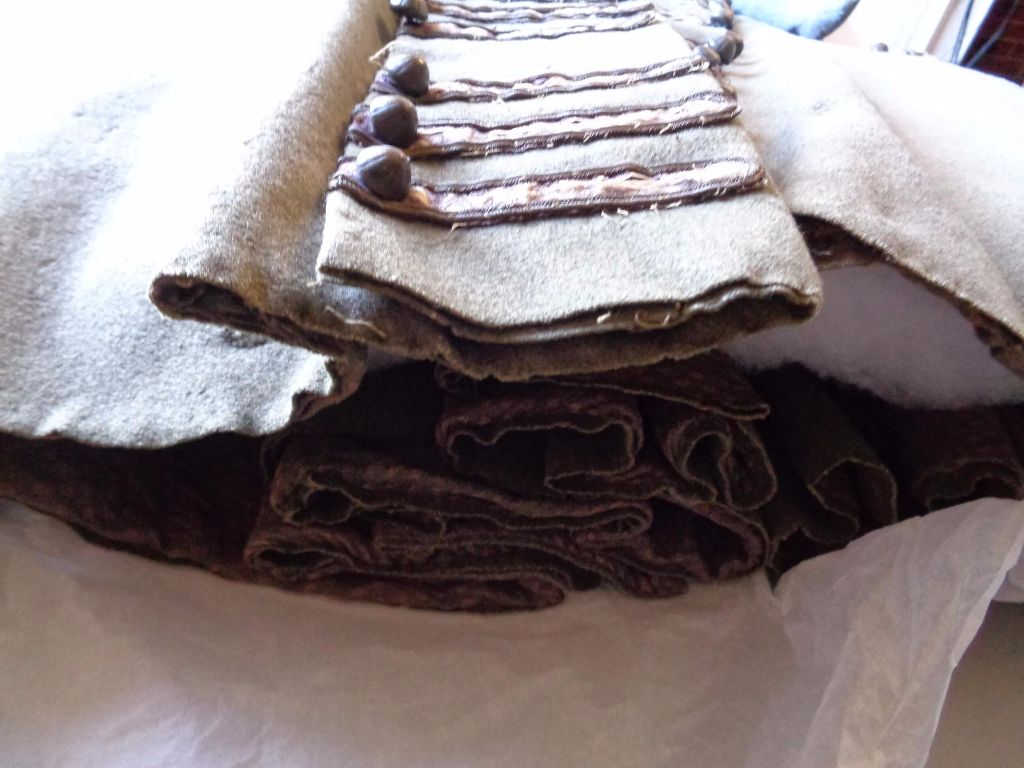 The coat has wonderfully full skirts in keeping with the fashion of the time, but unlike other coats we’ve seen from around this period, there was no extra wadding or batting padding out the pleats. There seems to be no additional layer of horse hair fabric either – another trick to help accentuate the full pleat fashion that we’ve seen. However, the whole coat has been layered with a loose weave Linen fabric sewn on the inside – (and here we’d normally say ‘supporting the outer fabric’ but this wool in no way needs it) backing the outer layer and making it feel thicker. The lining itself is also fairly durable and thick – not a silky silk but a densely woven material (which we think is silk) but which has a matt effect and is sturdy. It’s certainly survived well for 300 years.
The coat has wonderfully full skirts in keeping with the fashion of the time, but unlike other coats we’ve seen from around this period, there was no extra wadding or batting padding out the pleats. There seems to be no additional layer of horse hair fabric either – another trick to help accentuate the full pleat fashion that we’ve seen. However, the whole coat has been layered with a loose weave Linen fabric sewn on the inside – (and here we’d normally say ‘supporting the outer fabric’ but this wool in no way needs it) backing the outer layer and making it feel thicker. The lining itself is also fairly durable and thick – not a silky silk but a densely woven material (which we think is silk) but which has a matt effect and is sturdy. It’s certainly survived well for 300 years.
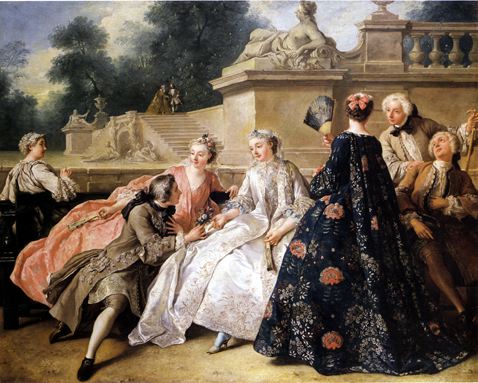 The Sleeves are incredibly boxy – and short! You can pick out a fashion for slightly shortened sleeves in the early half of the century in some of it’s portraits – a fashion where the full and flowing sleeve of the shirt gets displayed a little more by the cuff not quite reaching down to the wrist (see ‘La Declaration – 1731 – Troy, to our left here) . This could be why the sleeves are shorter than expected on this coat- or that this was a short man. However the argument for him being short has us confused too. The coat is long already and has been shortened. Unless he wore it by his ankles we would suggest it’s not his height that has dictated the sleeve length. However, the level of the waistline (see bottom picture) is fairly high up the coat. Coats from this period were worn much longer than their later ancestors – the pockets worn incredibly low too, which would explain why, in the shortening, the pocket has disappeared, but in all of these possibilities, the sleeves still don’t seem to be in proportion to th
The Sleeves are incredibly boxy – and short! You can pick out a fashion for slightly shortened sleeves in the early half of the century in some of it’s portraits – a fashion where the full and flowing sleeve of the shirt gets displayed a little more by the cuff not quite reaching down to the wrist (see ‘La Declaration – 1731 – Troy, to our left here) . This could be why the sleeves are shorter than expected on this coat- or that this was a short man. However the argument for him being short has us confused too. The coat is long already and has been shortened. Unless he wore it by his ankles we would suggest it’s not his height that has dictated the sleeve length. However, the level of the waistline (see bottom picture) is fairly high up the coat. Coats from this period were worn much longer than their later ancestors – the pockets worn incredibly low too, which would explain why, in the shortening, the pocket has disappeared, but in all of these possibilities, the sleeves still don’t seem to be in proportion to th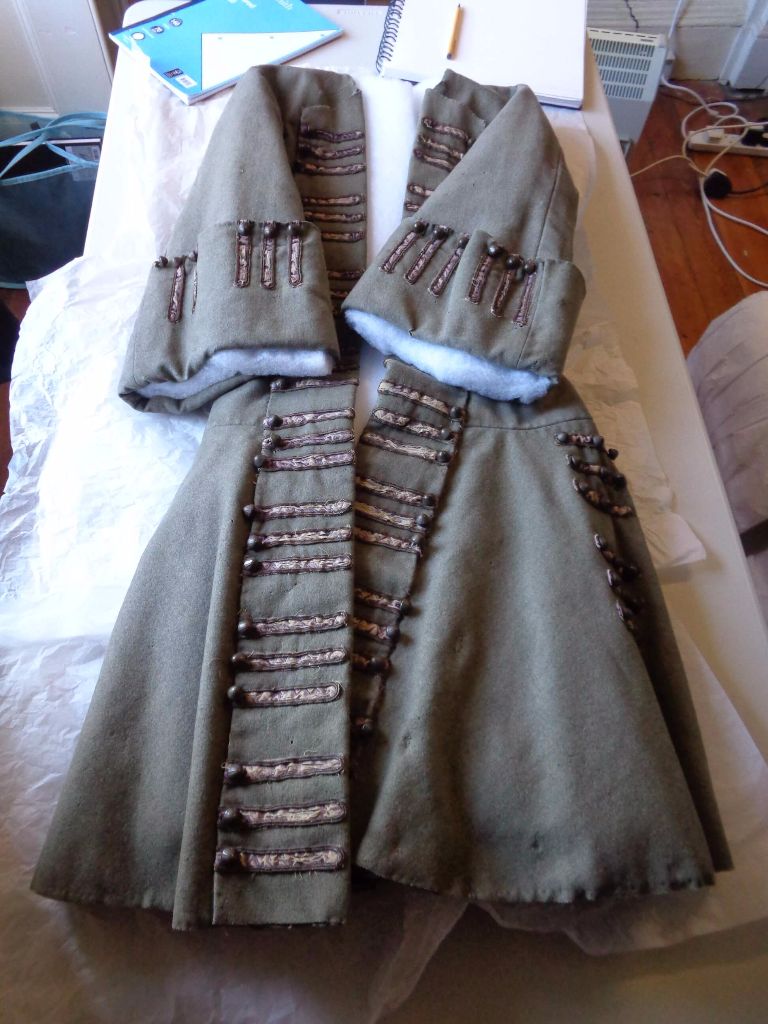 e length. Using the back view of the coat, the sleeves end only a few inches below the waistline – this is too short a distance proportionally. We would suggest he was of a shorter stature but that the sleeves too are proportionally short.
e length. Using the back view of the coat, the sleeves end only a few inches below the waistline – this is too short a distance proportionally. We would suggest he was of a shorter stature but that the sleeves too are proportionally short.
The decoration is made up of a heavy metal braid and purple velvet, on which sits the pointy-domed button. This run of decoration adds serious weight to the front edge and back vent. We are currently having buttons made that are similar to these and inspired by this coat.
I love this image to our right now as you can see the real dramatic nature of the pattern cutting – how short and dumpy the sleeves look and how boxy. The turned back facing of the front edge of the coat is classed (as far as we can tell) as ‘Military style’ – though in this coat it is much more basic than some of it’s fancier offspring. It’s also hard to tell if the metal would’ve been gleaming gold and it has dulled with age, or if it was always a darker colour. Both braid and button currently match perfectly but there does seem to be odd little patches of a brighter gold in the braiding. In which case this would have been very bling – especially if the buttons were a gold colour too.
Last but not least, here is a back view. You can see the pattern cutting nature of the CB panel here, in this coat it’s wider and pushing the coat fronts forward so they meet at the CF. This may seem an odd sentence, but when you see the pattern cutting of much later coats, this CB panel shrinks to mere inches, pulling the same sized front panels (but now with a curved front edge) more round the back so that they no longer meet at the CF. The back skirt panel too gets shrunk and the fullness of the skirts gets less and less. Here you can see the broadness of the C skirts panel and the pleats that are mounting up at the side.
You can also see that the body panels of the coat come down quite a bit below the waist – it’s interesting that it’s kind of matching the elongated waist look that some of the dresses were making women look. The skirt’s seam sits almost at seat level.

